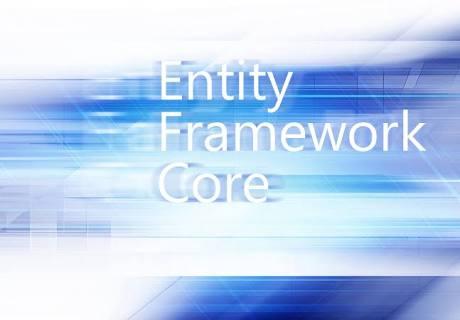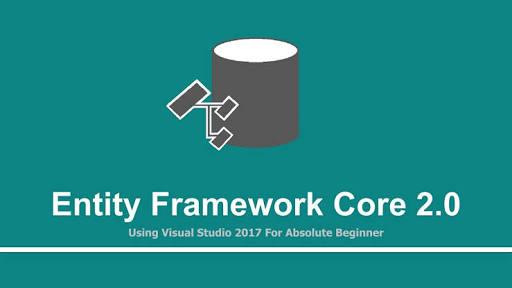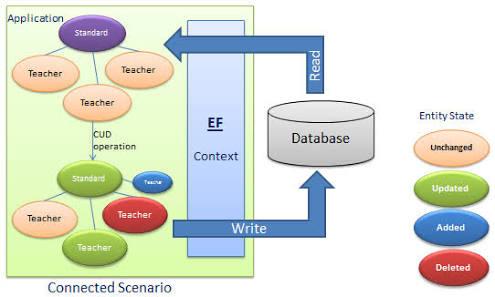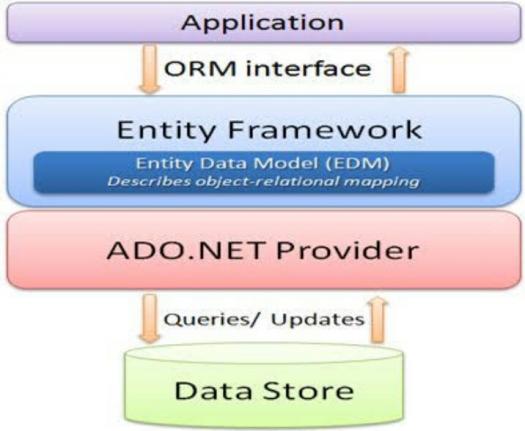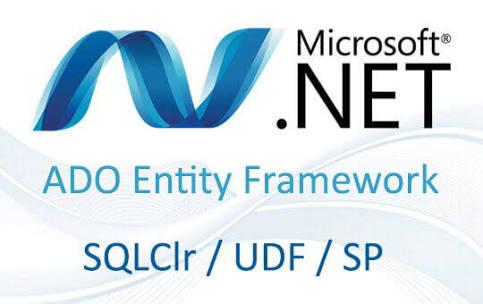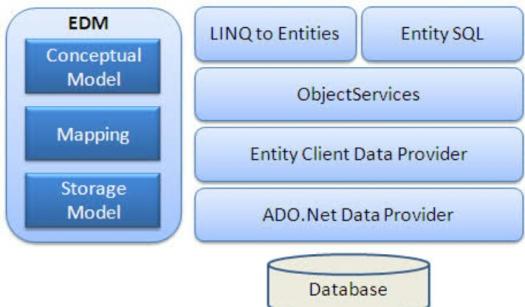Intelligent Entity Framework Test

Provided by Microsoft, Entity Framework is a mapping framework for ADO. NET that is object-relational, thereby enabling relational data. Take this quiz to assess your knowledge of Entity Framework.
- 1.
Entity framework is an object _____ framework.
- A.
Oriented
- B.
Functional
- C.
Relational mapping
- D.
Focused
Correct Answer
C. Relational mappingExplanation
The correct answer is "Relational mapping." Entity Framework is an object-relational mapping (ORM) framework, which means that it allows developers to work with relational databases using object-oriented programming concepts. It provides a way to map database tables to classes and perform CRUD (Create, Read, Update, Delete) operations on the objects, abstracting away the underlying database implementation details. This allows developers to work with databases using familiar object-oriented principles, making it easier to develop and maintain database-driven applications.Rate this question:
-
- 2.
Which of these is a benefit of Entity Framework?
- A.
Auto generate code features
- B.
Huge library
- C.
Slow use of money
- D.
Large memory recovery
Correct Answer
A. Auto generate code featuresExplanation
Entity Framework is a popular Object-Relational Mapping (ORM) framework that allows developers to work with databases using object-oriented programming. One of the major benefits of Entity Framework is its ability to automatically generate code features. This means that developers can easily create and modify database schemas, tables, and relationships without having to write tedious SQL queries manually. The auto-generated code features save time and effort, and also help in reducing human errors.Rate this question:
-
- 3.
In how many ways can an entity objects be created?
- A.
6
- B.
3
- C.
4
- D.
2
Correct Answer
D. 2 -
- 4.
Which of these gives meaningful naming conventions to objects?
- A.
Template
- B.
Pluralize and singularize
- C.
Framework
- D.
Object
Correct Answer
B. Pluralize and singularizeExplanation
Pluralize and singularize are naming conventions that give meaningful names to objects. Pluralizing refers to adding an "s" or "es" to the end of a word to indicate multiple instances of an object, while singularizing refers to removing the "s" or "es" to indicate a single instance. These conventions help in creating clear and understandable names for objects, making it easier for developers to work with and understand the code.Rate this question:
-
- 5.
Which of the following is an XML files which contains all the mapping details of how your object map with SQL tables?
- A.
CSDL
- B.
SSDL
- C.
EDMX
- D.
MSL
Correct Answer
C. EDMXExplanation
An EDMX file is an XML file that contains all the mapping details of how your object maps with SQL tables. It is used in Entity Framework to define the conceptual model, storage model, and mapping between them. The CSDL, SSDL, and MSL are all components of the EDMX file, where CSDL represents the conceptual model, SSDL represents the storage model, and MSL represents the mapping between them. Therefore, the correct answer is EDMX.Rate this question:
-
- 6.
What connects SSDL and CSDL?
- A.
EDMX
- B.
SSL
- C.
HTTPS
- D.
MSL
Correct Answer
D. MSLExplanation
SSDL (Store Schema Definition Language) and CSDL (Conceptual Schema Definition Language) are both XML-based languages used in the Entity Data Model (EDM) framework. They are used to define the structure and mapping of data in the Entity Framework. MSL (Mapping Specification Language) is the language used to map the conceptual schema (CSDL) to the storage schema (SSDL). Therefore, MSL is the correct answer as it connects SSDL and CSDL by defining the mapping between them.Rate this question:
-
- 7.
Which amongst the following is an XML file?
- A.
CSDL
- B.
SSDL
- C.
MSDL
- D.
All of the above
Correct Answer
D. All of the aboveExplanation
The correct answer is "All of the above" because CSDL, SSDL, and MSDL are all file extensions used in the Entity Framework, which is a framework for mapping data from a database to an application. These file extensions represent different parts of the Entity Data Model, and they are all written in XML format. Therefore, all three options are XML files.Rate this question:
-
- 8.
Which of the following is a template-based code generation engine?
- A.
CSDL
- B.
T4
- C.
EF
- D.
SSL
Correct Answer
B. T4Explanation
T4 is a template-based code generation engine. It is a feature of Visual Studio that allows developers to generate code based on templates. T4 templates are text files that can be customized to generate code for different scenarios. They can be used to automate repetitive tasks and generate code based on predefined patterns. T4 is commonly used in the .NET ecosystem for generating code for data access layers, service layers, and other repetitive code patterns.Rate this question:
-
- 9.
To use eager loading, you need to turn off lazy loading.
- A.
Always true
- B.
Depends on the situation
- C.
False
- D.
Depends on the related entities
Correct Answer
C. FalseExplanation
The given statement is false. Eager loading and lazy loading are two different techniques used in database querying. Eager loading is used to load all the related entities along with the main entity in a single query, while lazy loading is used to load the related entities only when they are accessed. These two techniques are independent of each other and can be used together if required. Therefore, it is not necessary to turn off lazy loading in order to use eager loading.Rate this question:
-
- 10.
What does POCO stand for?
- A.
Plain Object C# Operation
- B.
Plain Old C# Object
- C.
Place Old C# Object
- D.
Plain Object C# Old
Correct Answer
B. Plain Old C# ObjectExplanation
POCO stands for Plain Old C# Object. This term is used to describe a simple, lightweight object in the C# programming language that does not have any special dependencies or frameworks. POCOs are often used in object-relational mapping (ORM) frameworks, where they represent database entities without any additional functionality or behavior. The term "Plain Old" emphasizes the simplicity and lack of complexity in these objects.Rate this question:
-
Quiz Review Timeline +
Our quizzes are rigorously reviewed, monitored and continuously updated by our expert board to maintain accuracy, relevance, and timeliness.
-
Current Version
-
Mar 21, 2023Quiz Edited by
ProProfs Editorial Team -
Feb 27, 2018Quiz Created by
Cripstwick
 Back to top
Back to top




